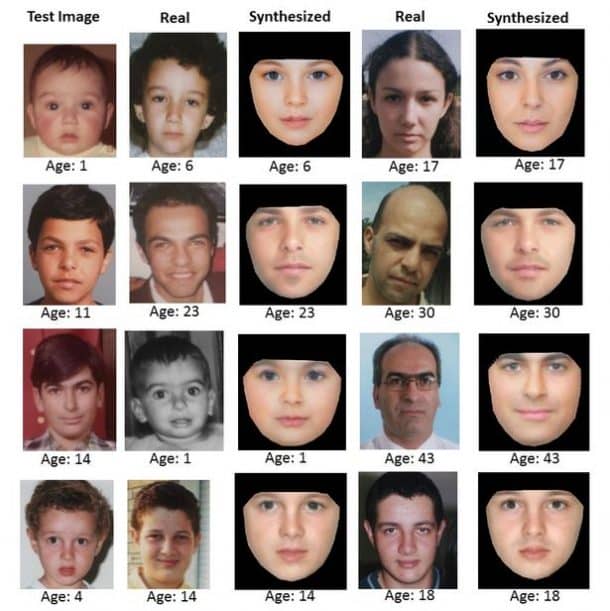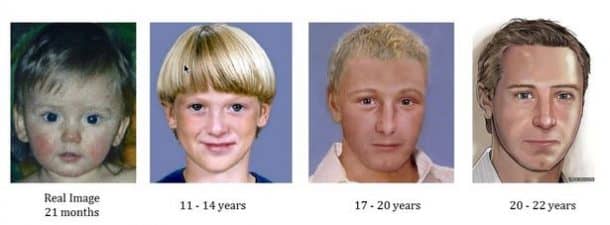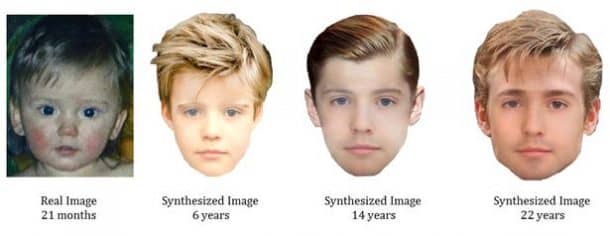While most people use the “photo-aging” software for fun and games, a new technique could actually help search for long-term missing people around the world. Researchers have developed the technique at the University of Bradford, and it successfully estimates key features of a face like the shape of the cheek, mouth, and forehead at a certain age.
The information from an earlier photo of a person is fed into the algorithm which then successfully synthesizes new features for the person’s face at different ages. The algorithm is more accurate than others since it uses machine learning to estimate key features at different ages using a large database of individuals.

Professor Hassan Ugail of Bradford’s Centre for Visual Computing, lead in the research, had this to say,
“Each year around 300,000 missing person cases are recorded in the UK alone. This has been part of our motivation in endeavouring to improve current techniques of searching for missing people, particularly those who have been missing for some considerable time.”
The technique was used in the case of Ben Needham, a 21-month-old child who disappeared on the Greek island of Kos on 24th July 1991. He has never been found, but by using several images, the investigators managed to create his possible facial features at ages 11-14 years, 17-20 years, and 20-22 years.

“Our method generates more individualised results and hence is more accurate for a given face. This is because we have used large datasets of faces from different ethnicities as well as gender in order to train our algorithm,” said Professor Ugail.
“Furthermore, our model can take data from an individual’s relatives, if available, such as parents, grandparents and siblings. This enables us to generate more accurate and individualised ageing results.

“Current methods that exist use linear or one-dimensional methods whereas ours is non-linear, which means it is better suited for the individual in question.”
Professor Ugail is now working with the relevant parties to gain further police cases to test their work. His team is also developing plans to incorporate this technique as a biometric feature in face recognition systems.
These findings will be presented at the International Conference on Missing Children and Adults at Abertay University, Dundee, and have already been published in the Journal of Forensic Sciences.


